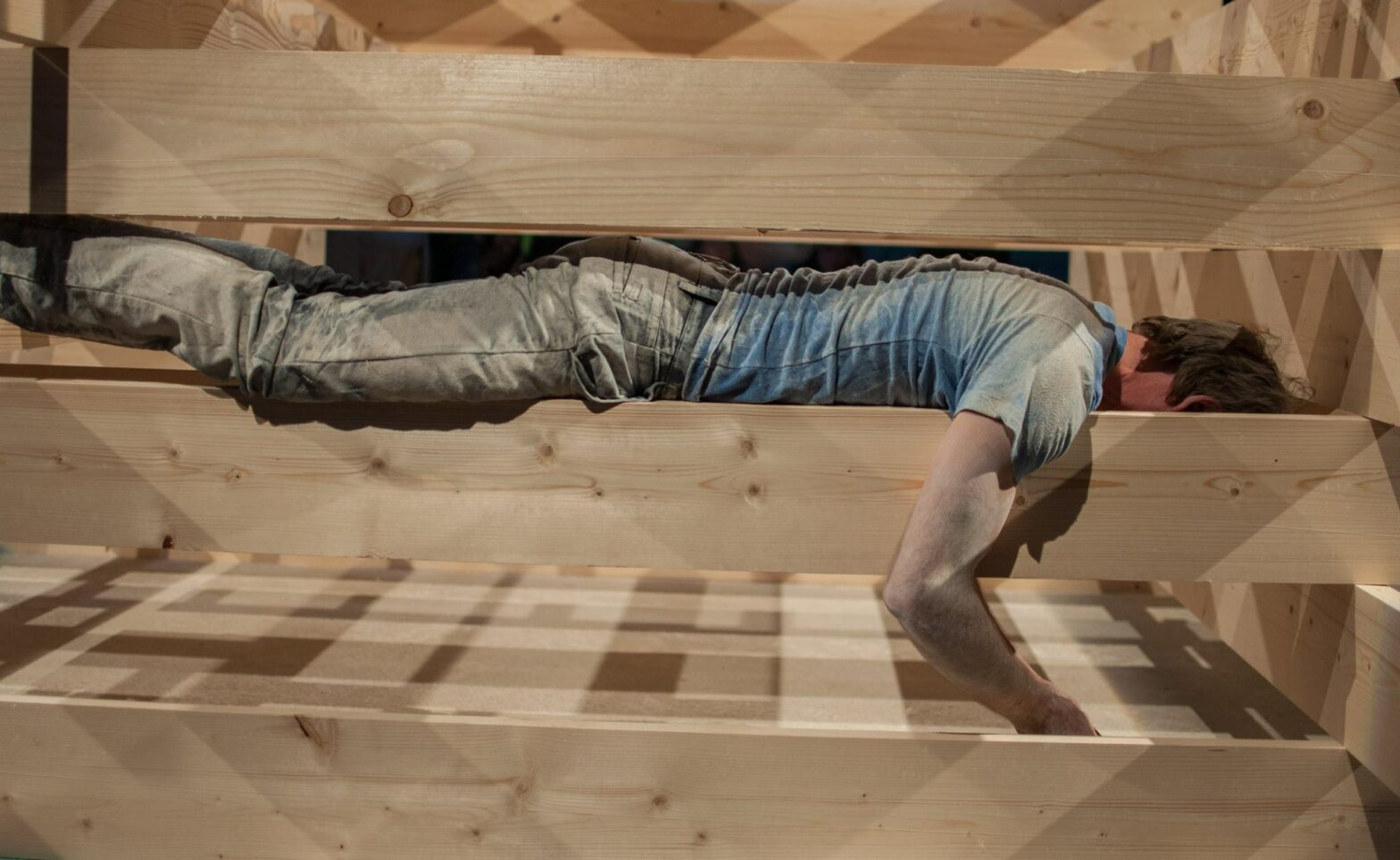Eine Holzkonstruktion aus 30 unverbundenen, vertikal aufeinander gestellten Dielenbrettern, 3 m lang, 3 m breit, 2,10 m hoch. Das Publikum steht um diesen engen und gleichzeitig durchlässigen Holzkubus, auf welchen der Performer nun, wie ein gliederloses Tier, zukriecht. Er windet sich langsam an der Konstruktion entlang, findet einen schmalen Spalt und zieht sich auf die untersten Balken, auf welchen er dann zum Liegen kommt. Mit dem Kopf nach unten beginnt er zu sprechen:
“In some remote corner of the universe that is poured out in countless flickering solar systems, there once was a star on which clever animals invented knowledge. That was the most arrogant and the most untruthful minute in ‘world history’ – yet indeed only a minute. After nature had taken a few breaths, the star froze over and the clever animals had to die.” (Friedrich Nietzsche)

Diese Fragmente aus Friedrich Nietzsches gleichnamigem, posthum veröffentlichtem Essay markieren den Anfang der eindrucksvollen 50 minütigen Performance, welche die Zuschauer auf eine tour d’horizon über den Menschen mitnimmt: angesichts der Unendlichkeit erscheint die Zeit des Menschen, die dieser auf der Welt verbringt, als klägliches, ja lächerliches Unterfangen. Dieser Einsicht in die Vergeblichkeit seiner Existenz setzt der Mensch die Sprache der Erkenntnis entgegen, die ihm die Welt zwar erklärbar machen soll, ihn aber in den Käfig einer Begrifflichkeit zwängt und ihm den Zugang zum Eigentlichen, zum Leben der Dinge verweigert. Auf der Suche nach Erkenntnis über die Welt, über ihre Wahrheit, über sich selbst versteigt er sich vielmehr im Gebälk seines sprachlich gefassten Denkens. Um es salopp zu sagen: er hat ein Brett vorm Kopf, das ihn davon abhält, den Dingen ‚ins Gesicht zu sehen’. Diesen Brettern, welche für ihn die Welt zu bedeuten vermeinen, nun die Grundlage zu entziehen: das heißt es, zu leben.
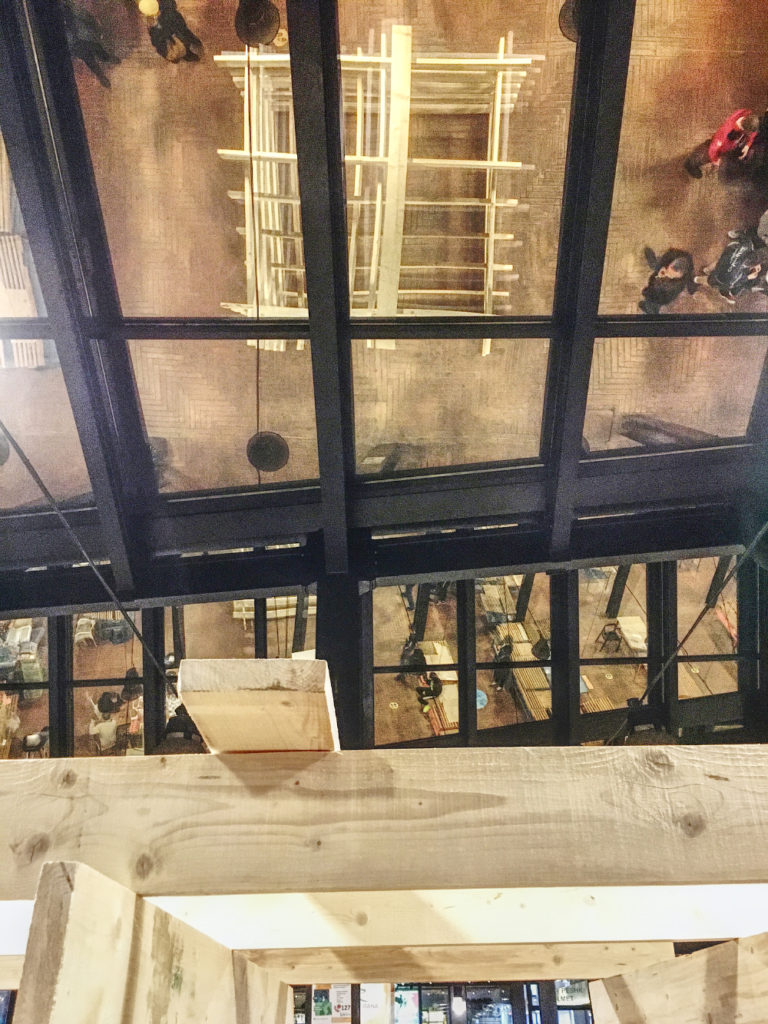
In light of infinity, the limited time a human being spends on this planet appears to be deplorable, even ridiculous. Knowing about the futility of his existence, man tries to comprehend life by means of language which locks him into a cage of concepts and denies him access to the actual life of matter. Searching for knowledge about the world, about truth, about himself, he gets lost in the woodwork of his own thinking. To put it casually: he becomes a blockhead that is unable to see what is actually there. Stripping away his foundation of boards and beams that mean the world to him, he finally understands what it means to live.
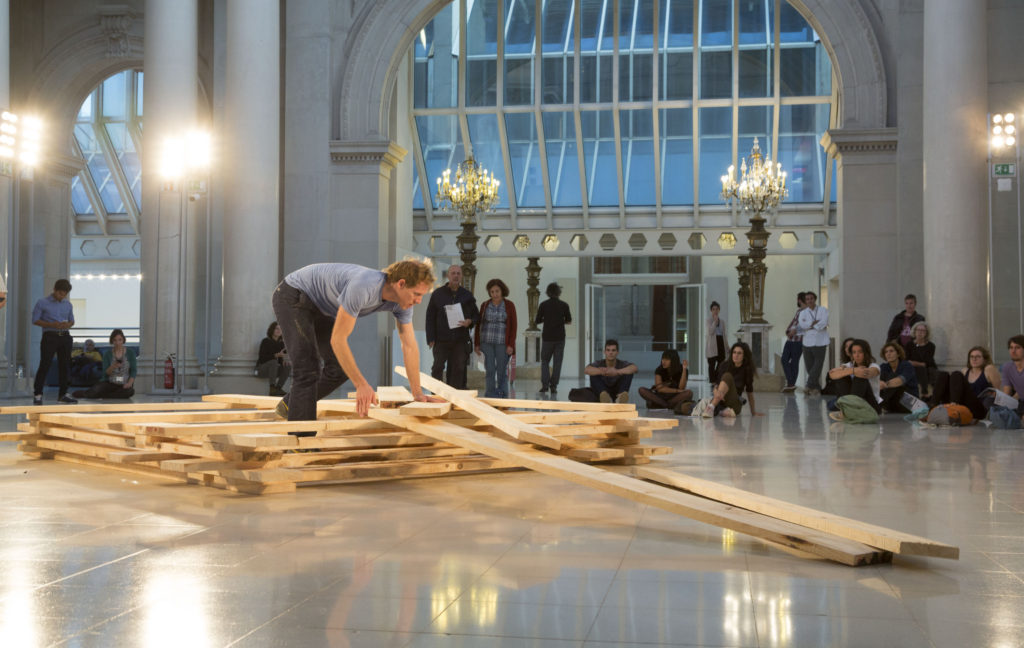
‚Without Nietzsche there wouldn’t be any contemporary thinking, and thus most likely no contemporary body.’ I jot these words down during a rehearsal in which dancers are busy bouncing off the floor and working out their muscles, keeping their ligaments flexible. This is what Nietzsche is doing: He writes against the gravity of thought and thus trains our mental muscles; he writes against the inertia of our minds and makes them move again. Nietzsche’s words do and have matter.
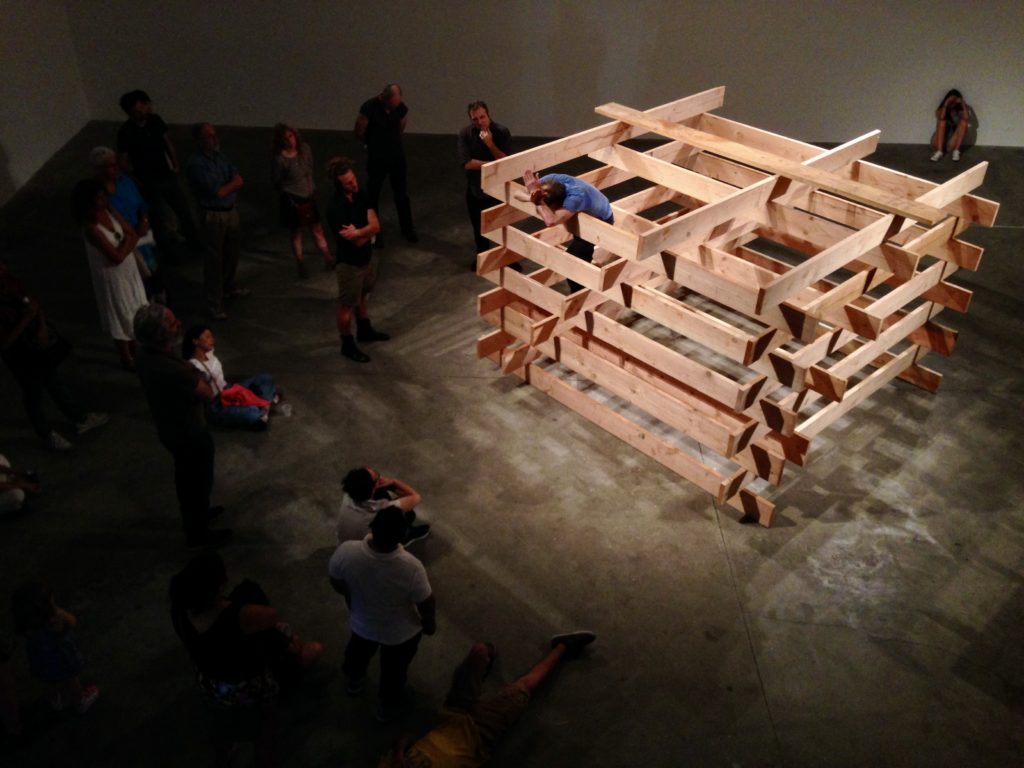
“Peter Stamer gelingt es, ein komplexes, philosophisches Thema auf eine einfache, anschauliche, performative Bildsprache herunterzubrechen. Dabei geht er nach einem relativ simplen Inszenierungsmuster vor, das aber höchst effizient wirkt. Er lässt Willems vor dem Monolog eine körperbetonte Inszenierung setzen, die das Publikum erst im Nachhinein in Verbindung mit Nietzsches Philosophie deuten kann. Dann ist es der Bruch mit der metaphysischen Abhandlung, der das Publikum zwingt, das bisher Gesagte auf die Richtigkeit hin zu überprüfen. Wieder im philosophischen Duktus angelangt, schiebt Willems noch kurz vor Schluss eine kleine Tanzeinlage ein. Klassische Posen mit zeitgenössischem Zugang, holprig und humorig, allzu ernst nehmen sich Stamer und Willems dabei selbst nicht. Das blitzt an dieser Stelle wunderbar durch.” (Michaela Preiner in European Cultural News, 2. August 2016)
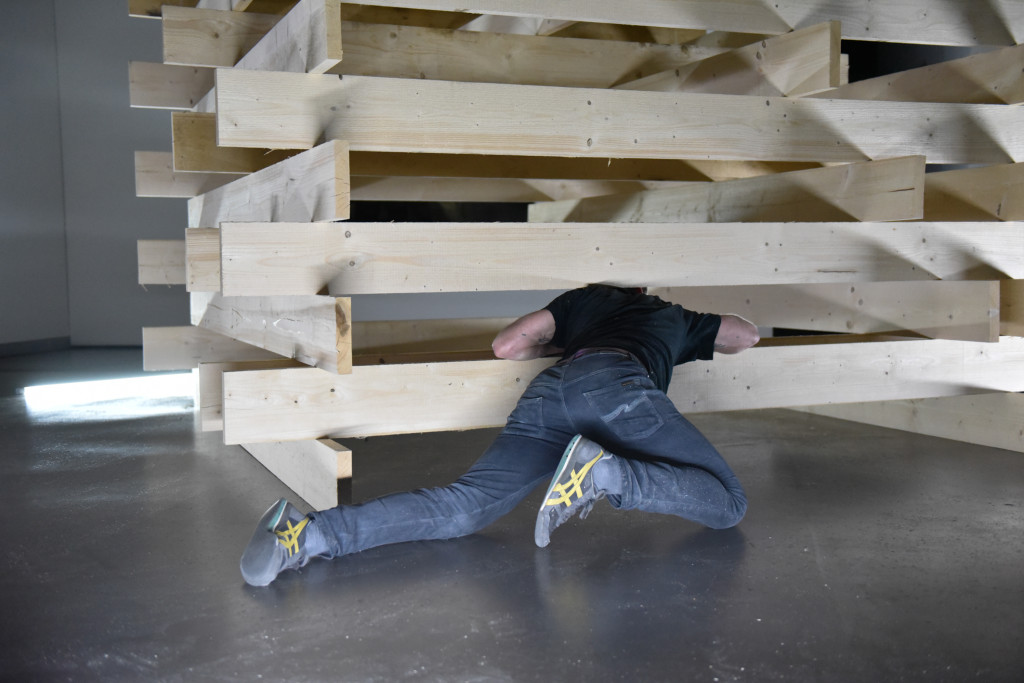
“Willens hat das seltene Talent mit dem Publikum Kontakt aufzunehmen ohne es zu belästigen, so doziert er nicht, rezitiert auch nicht seinen Nietzsche, sondern erzählt, erklärt, will, dass wir nicht nur schauen, sondern auch hören.” (Ditta Rudle auf tanzschrift.at)

Last performances were presented on 11 and 12 August 2017 at Human Resources LOS ANGELES and on 18 August 2017 at Silent Funny CHICAGO, on invitation by Goethe-Institut.
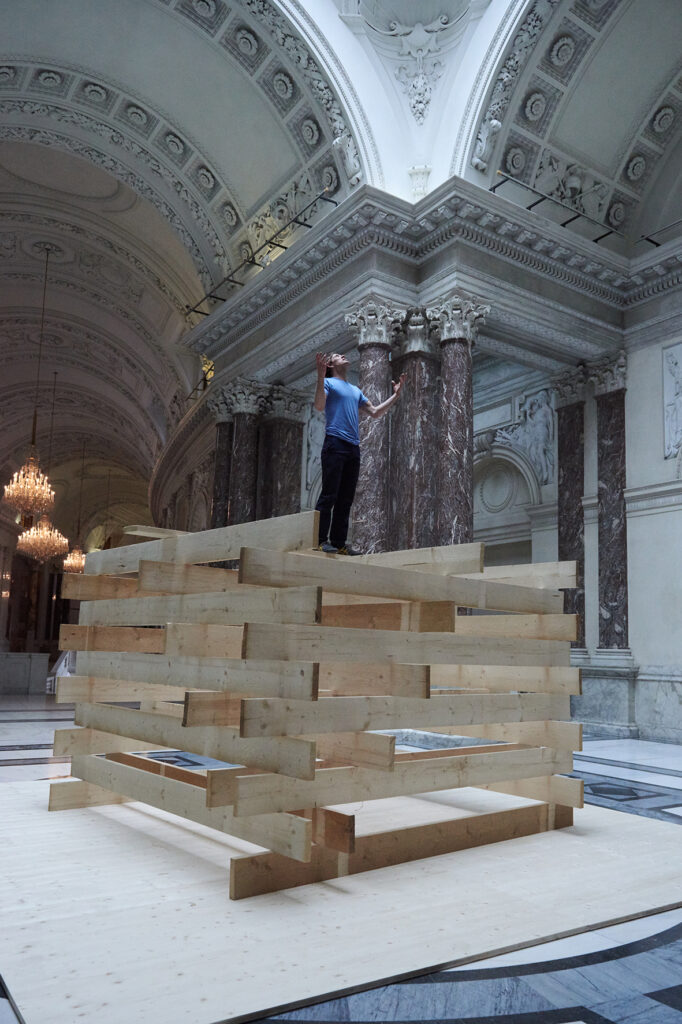
Performance from 27 April 2017 at Kunsthistorisches Museum Vienna in the frame of FEEDBACK Festival by Tanzquartier Wien can be seen here.
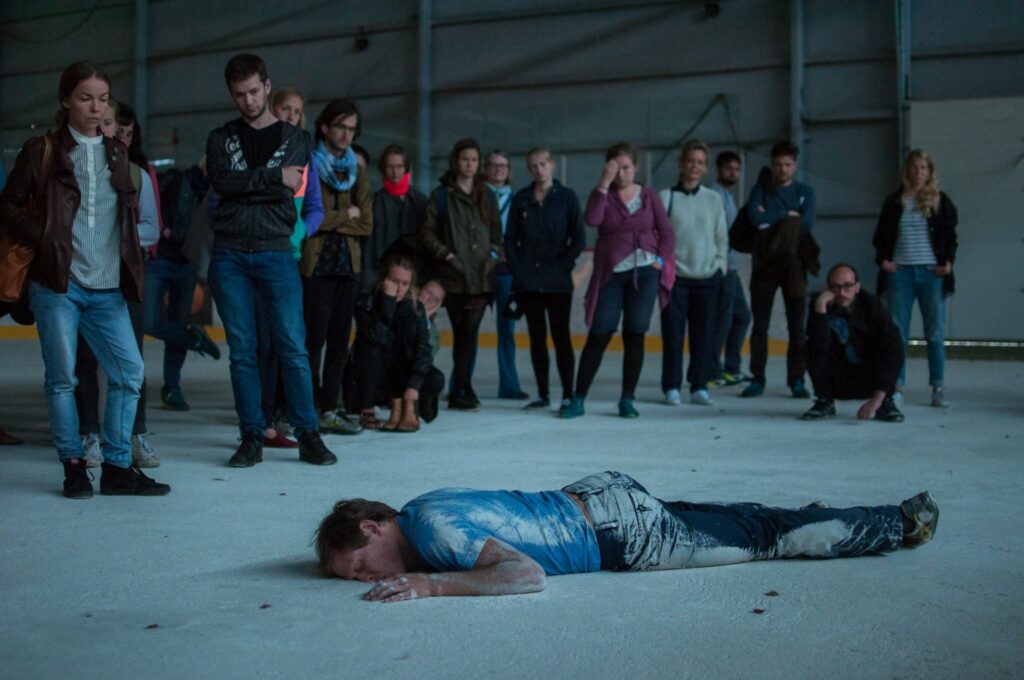
Performance from 9 July 2017 at NOTAFE Festival Viljandi:
This new creation on Nietzsche’s landmark text had its first performance on 29th November, 2015 in the framework of Philosophy on Stage at Tanzquartier Wien. It was also shown on 13th and 14th May 2016 at Zeitraum Exit Mannheim and at Impulstanz Vienna on 28th and 29th July 2016.
This take on Nietzsche is part of a triptych on the vital forces philosophical, non-theatrical texts summon on screen and stage.
Conceived, directed, and set designed by Peter Stamer
Performed by Frank Willens
Text: Friedrich Nietzsche
Edited, abridged, supplemented, and partly re-translated text version in English by Peter Stamer and Frank Willens

Krassimira Kruschkova
“When we speak of all these things …”
When we speak of trees, colours, snow, and flowers, we believe we know something about the things themselves, although what we actually have access to are just metaphors of things, which do not correspond at all to the entities themselves.
(“On truth and lie in an extra-moral sense”, Friedrich Nietzsche)
How to get things to speak and which organ to listen to them with, to their differently organised articulation, to their materiality? How to re-think things, how to choreograph them, their resistance, their contingency, their emergent causality? How do things choreograph us – and our nothingness?
If someone hides a thing behind a bush, and then looks for this thing there, and finds it there, there is nothing admirable about that mode of hide-and-seek: but that is the way it is with the seeking and finding of “truth” within the rational sphere, Friedrich Nietzsche writes in On truth and lie in an extra-moral sense.
In an oscillation between the literal and the figurative – following Nietzsche’s own text movement –, Peter Stamer’s staging of On truth and lie in an extra-moral sense does not hide anything we then are supposed to find; rather, it literally shows how it works, in stunning simplicity, in all its complexity. The performer Frank Willens wriggles amidst the audience which is situated on stage, surrounded by a wooden scaffold. The cubic scaffold itself is enclosed by a floor frame marked in white which the audience is advised not to step on, for it is a very fragile building, the individual boards only kept together by their own weight. But how much do they weigh, those boards that are supposed to signify the world?
And how much lightness does a statically tight – and exactly because of that not statical – stage installation of terms bear? Or, with Nietzsche: In this respect man can probably be admired as a mighty architectural genius who succeeds in building an infinitely complicated conceptual cathedral on floating foundations. Of course, in order to anchor himself to such a foundation, the building must be as light as a spiderweb – strong enough not to be blown apart by the wind, yet delicate enough to be carried along by the wave.
The interesting thing about the wooden sculpture is that which one does not see, or rather what one sees as nothingness, for it really is nothing that keeps the boards together – just as the nothingness in film, the cut is the most important thing, or just as Kleist’s famous vault of loose stones does not collapse because all the stones want to tumble down together at the same time. Or Nietzsche again: As an architectural genius, man excels the bee; for the bee builds out of wax that it collects from nature, while man builds out of a much more subtle material, concepts, which he must fabricate out of his own self. In this respect he is quite admirable…
Now Frank Willens ups the ante, he crawls into the already threateningly jiggling ‘climbing frame’ of terms, into the grid cube built out of loose boards, magic cube, Rubik’s cube, and begins to recite Nietzsche’s text from the year 1873. Frank Willens directly addresses the audience, at first gazing through the boards, not so much a window- than a grid-gaze. Some spectators move along around the cube, following Frank Willens around the scaffold who keeps changing his position while thinking out loud, speaking to the public.
For the stage direction again and again focuses the text as direct address to the audience and as a question: Nietzsche’s sentence What does man know about himself! (exclamation mark in Nietzsche’s text) here sounds like this: For what do you really know about yourself? (question mark in the performance script). Direct address of the other as a trick, but also as a decision, as a position that does not accept rhetorical exclamation marks without bending, warping, deforming, inflecting, declining, conjugating them into question marks. In direct interaction with the audience the work thus allows for variations, extrapolations, literal shifts into the incalculable decontrolling the conditions of experience.
Frank Willens, keeping on talking, sticks his head out of the boards towards the audience, another type of scaffold. Or is the trestle of boards actually a stake? According to Antonin Artaud the artist gives signs down from the stake, solitary, unique signs which therefore are none, which focus singularity, irretrievability. With his head ‘on the scaffold’ Frank Willens discusses that man is based on a lack of mercy, insatiable greed, murder, that man is based on the indifference that stems from his ignorance – while day-dreaming on a tiger’s back. Given this state of affairs, where in the world does the desire for truth originate? (Again, an exclamation mark in the original text, a question mark in the performance script.)
Slowly, board for board, Willens climbs the wooden scaffold, skeleton, corset, and asks Nietzsche’s question: What is a word? Here, Peter Stamer and Frank Willens add a list of words of their own, putting – leading the text’s rhetoric into aporia – a long list of things before Nietzsche’s short list When we speak of trees, colours, snow, and flowers… (See the motto of this text.)
The performance script: When we speak of bricks, or walls, houses, when we speak of cars, tyres, bicycles, when we speak of streets and lights, street lamps, or cushions to sit on, or black cubes, when we speak of cables, lamps, sofas, when we speak of beds, when we speak of pillows, chairs, when we speak of blankets, plates, bowls, forks, spoons, glasses, cups, when we speak of eye glasses, when we speak of pins, sweaters, when we speak of pants, trousers, shoes, socks, underwear, hats, bags, wallets, credit cards, when we speak of tanks, satellites, missiles, guns, when we speak of fences, when we speak of explosions, when we speak of hospitals, when we speak of doctors and railroads and s-bahns and u-bahns, and airplanes and blimps, when we speak of helicopters, when we speak of stairs, staircases, railings, when we speak of flowers or trees, when we speak of all these things…
A list is exactly in Nietzsche’s sense not about an equation of the dissimilar but rather about its non-hierarchical dissemination. And when we talk about lists, we are talking beyond causality, the list is rather defined by the principle of conjunction: of correlative, paratactic conjunction and not of subordinating, hypotactic one, it is serial enumerating, stringing together which makes commonplaces come apart at the seams instead of commonly coming together. Therefore often the mere listing, itemising, the hierarchy-less stringing together or alphabetising of materials in performative processes which names nameless differences, short-circuits parallel levels of articulation.[2]
This list also reminds me of that impossible taxonomy of animals by Borges[3] which Foucault quotes in The Order of Things. An Archaeology of the Human Sciences: A list voiding dependences, subordinated togetherness and subordinating conjunctions, a paratactical instead of hypotactical list which distributes and disappoints the control and relief functions of collective laughter: Instead of subordinating conjunction – conjunctive, the mode of possibility, the “what-if mode”.
Conjunctive and the comical as esprit of the possible: As a tremor of levels, the comical addresses the vibrating intervals, the fault lines between parallel worlds which we, funny humans, so funnily belong to simultaneously. As funny as that juxtaposing, paratactic classification of animals by Jorge Luis Borges. In this fictional animalic list, the comical paradoxically short-circuits parallel levels of articulation and argues against wit-less theories of association, getting stuck in these dried-up theories like in one’s craw. “Laughter is a chaos of articulation”, Walter Benjamin says.
Meanwhile, Willens climbs the ‘scaffold of terms’. At last, sitting on the edge of a board from the topmost layer, he addresses man who conceives himself to be the measure of all things: What is truth? A mobile army of metaphors and anthropomorphisms, a sum of human relations, which after long use seem solid, canonical, and binding to the people: Truths are illusions, however man has forgotten that they are illusions, merely worn-out metaphors which have become impotent, coins which have lost their face, and can be used only as metal.
With a blah-blah gesture of hands above his head which might mark a puppet dialogue, following Nietzsche’s question-answer rhetoric, or the big mouth of metaphors that eats up things as if they were pac-man in a computer game. (The name is derived from the Japanese onomatopoeia paku paku for “repeatedly opening and closing one’s mouth”, eating points in a maze while being pursued by ghosts.)
Or like this: Which ghosts of reality pursue language while it is trying to make a point about metaphors? A spectre-, ghost-, gesture-game on Nietzsche’s scaffold of terms which could collapse like a house of cards. No, not ‘could’ – shortly after the ‘big mouth game’ the scaffold actually falls in noisily, gradually: after a small, extraordinarily well calculated movement by Willens, and another one, another one.
But how much calculation does a singular fall need and take, a singular case [the German word Fall also means case], a case study, a case of chance, a contingency or the dice of terms Nietzsche talks about: Every word becomes a concept as soon as it is supposed to simultaneously fit countless, more or less similar phenomena…. Just as no leaf is ever exactly the same as any other, certainly the concept “leaf” is formed by arbitrarily dropping those individual differences, by forgetting the distinguishing factors… In order to form a word for a thing we let that thing, one could say, fall like a leaf. Nietzsche: Of course, the intuitive man suffers more violently when he does suffer; indeed, he also suffers more often, because he does not know how to learn from experience and he falls again and again into the same pit into which he fell before.
While Science, so Nietzsche, will have to dig successfully in these shafts forever, and everything it finds will coincide and not contradict itself (…) the intuitive man (…) falls again and again into the same pit. A fall practice full of loss and lust. So, before we take too much of a shine to the semantic falling game, the installation crashes down. However, the fall only is a falling apart at first glance; rather, it is a statically skilful contraction.
After the collapse, Willens continues to shift the boards. Does he try to build a new sculpture by pulling the boards more and more apart, trying to balance on them, to rock, to swing? This swing scene at Halle G of Tanzquartier Wien is much longer and more explicit at MUMOK Wien, where Willens speaks the following text as if reviewing the pictures hanging on the museum walls: Who’s pulling whose leg pulling the boards in this experiment on truth and lie? Is it a monstrous game of spillikins where one has to try and lift one wooden stick with another without touching the other sticks, mostly in vain? One is allowed to (and Willens does) lift, rotate the sticks, the cube boards or concepts, bony and cubeshaped like a dice, and equally rotatable (Nietzsche) either with the hand, or with another stick, board, concept…
A work which does not hide in order to find, but rather performatively spells out metaphors, exactly in that indissoluble process/product tension – in interaction with the text, the audience, the space, the situation, the context: “In search of knowledge about the world, about its truth, about itself”, Peter Stamer says, “the human being rather gets lost in the woodwork of its lingually composed thinking. To put it casually: its head is boarded up, which keeps it from ‘facing’ things. Depriving these boards which for it seem to signify the world of their foundation: that is what being alive means.”
Presumptuous, gauging, incommensurate, extra-morally untimely is Nietzsche’s Text, for until now we have heard only of the obligation which society, in order to exist, imposes: to be truthful, i.e., to use the customary metaphors, or in moral terms: the obligation to lie according to an established convention. (This text passage does not occur in the abbreviated script of the performance.) Presumptuous with regard to theatre conventions, measuring and missing their conditions of possibility, precisely decontrolling, corresponding with Nietzsche’s untimely also the work by Peter Stamer and Frank Willens which balances and spells with boards and words: We could continue their list thus: the balance, the ballast, the blah-blah, the boards…
As if we could equally pull boards and legs. As if lies had legs – and feet. As if things were pulling our puppet strings, i.e. our words – pulling the boards, the ground away from under our feet, groundless, for no reason, for nothing.
[2] In that context see also the text by Peter Stamer on his performance For Your Eyes Only (2014); or the alphabetically sorted 12-hour work by Yosi Wanunu and Peter Stamer, The Circus of Life. A – Z (2015).
[3] Jorge Luis Borges in: Michel Foucault: The Order of Things. An Archaeology of the Human Sciences, Vintage Books, Random House, Inc., New York 1994, p. IX: “animals are divided into: (a) belonging to the Emperor, (b) embalmed, (c) tame, (d) sucking pigs, (e) sirens, (f) fabulous, (g) stray dogs, (h) included in the present classification, (i) frenzied, (j) innumerable, (k) drawn with a very fine camelhair brush, (l) et cetera, (m) having just broken the water pitcher, (n) that from a long way off look like flies.”
